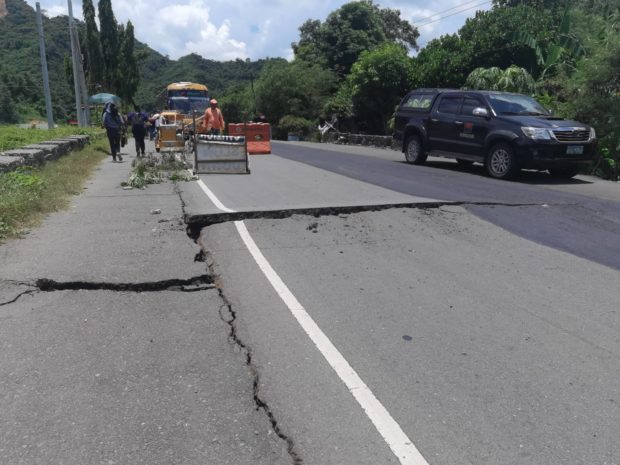PH, Japan ink pact on quake preps to mark 1990 Luzon quake

The Philippines experiences frequent earthquakes and volcanic activity. This photo was taken in the town of Pidigan when a magnitude 5.1 earthquake struck Abra province in April 2022.
MANILA, Philippines — The Philippines and Japan on Tuesday signed an agreement to improve earthquake and tsunami capabilities to mark the 34th anniversary of the deadly 1990 Luzon quake.
The Philippine Institute of Volcanology and Seismology and Japan International Cooperation Agency (JICA) embarked on a partnership dubbed as “The Project for Capacity Development for Monitoring and Information Dissemination of Earthquake, Tsunami and Volcano”.
The ceremony, held in Phivolcs auditorium in Quezon City, was graced by JICA chief representative Takema Sakamoto and Phivolcs director Teresito Bacolcol.
READ: Grim memory of 1990 Luzon quake stays with survivor
“We deem this as an invaluable knowledge-sharing experience,” Bacolcol said in a statement.
Scheduled for a three-year duration, the collaboration will leverage JICA’s expertise in earthquake analysis, tide level analysis, tsunami early warning, disaster information communication, and awareness, according to Bacolcol.
“This project will entail a series of comprehensive training programs in the Philippines and master’s courses in Japan that will enable our team to learn from the seasoned experts at JICA and its partner universities and organizations,” he said.
Such initiatives, Bacolcol said, were made to avoid the over 2,000 deaths reported, mostly in Baguio City, when the Magnitude 7.8 earthquake occurred on July 16, 1990.
READ: Solidum: Palawan needs more earthquake drills after rare tremor
Metro Manila is also anxiously anticipating “The Big One.”
The so-called Big One—or a magnitude 7.2 earthquake hitting Metro Manila—would lead to at least 52,000 deaths, and 500,000 injuries, according to the study of risk assessment and consultancy firm PSA Philippines Consultancy Inc. published in 2019.
Phivolcs said the West Valley Fault in Metro Manila only moves every 400 to 600 years, and its last movement was in the 1600s.
Sitting on the Pacific “Ring of Fire” where tectonic plates often collide, the Philippines experiences frequent earthquakes and volcanic activity. —Moss Laygo, trainee